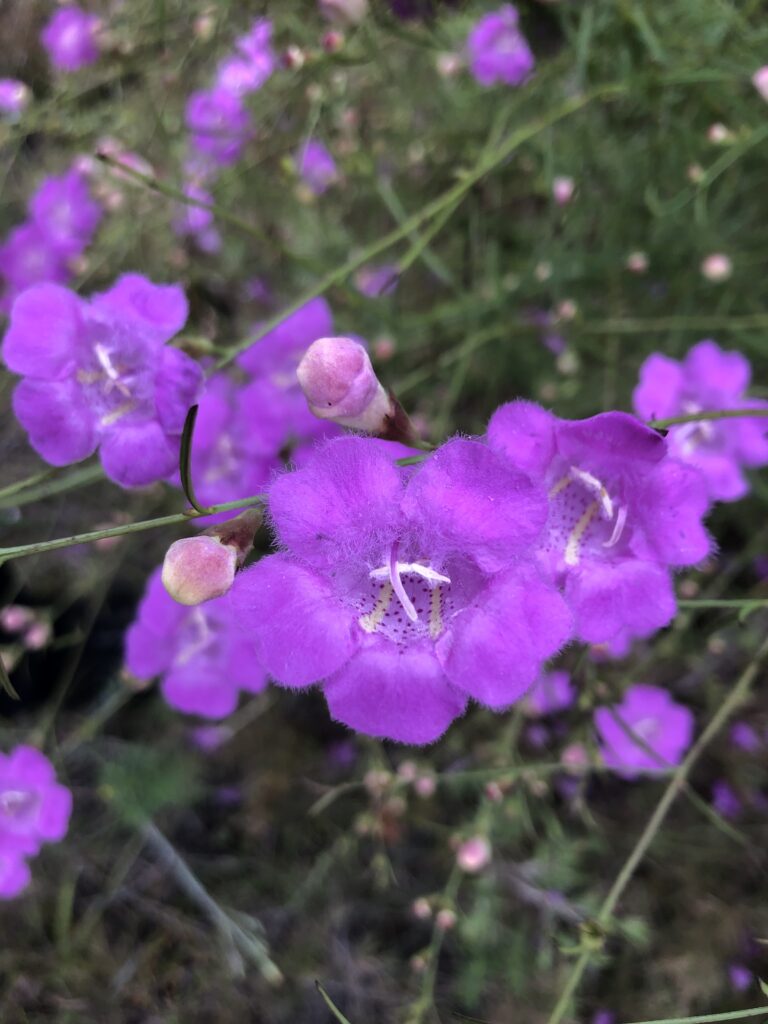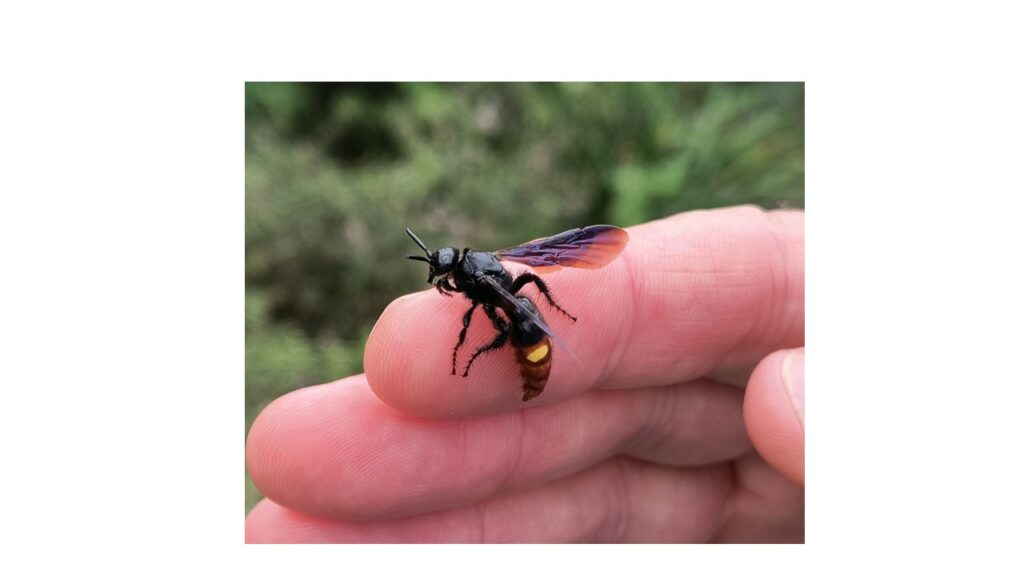I recently enjoyed seeing a few particularly beautiful species, one plant and one animal, and by coincidence they are both parasites. Usually people recoil at the suggestion that there are parasites among us, imagining some horrible disease. But the world is full of parasites that have no interest in humans, and we should be able to admire them for who they are. Many are beautiful and some have nataural histories that are fascinating in regard to tricks they play on their hosts, or perhaps a necessary series of unlikely events that are required to attack the host.

False foxglove is actually closer to snapdragons than to foxgloves.
This beautiful “false foxglove” (false because it is not a foxglove) starts out as a normal, independent seedling, but soon connects to the roots of another plant. This species, Agalinis purpurea, often attacks grasses, and was abundantly in bloom in a dune habitat in coastal Virginia at the end of September. Note that in the first photo the plant has only very modest leaves: It doesn’t need to bother much with leaves if it has a couple of good hosts on the line!

Large and bold, Scolia dubia, is common at flowers in late summer.
There is no common name for Scolia dubia, a late season wasp. Not far from the false foxglove, I coaxed one of many wasps off a flower onto my hand for a portrait. Iridescent wings and a black body make a striking contrast with the red abdomen bearing two large yellow spots. Many of the parasitic wasps are docile and unlike aggressive hornets and yellowjackets. These particular parasites will search the surface of the soil seeking beetle grubs living underground, such as June bugs or Japanese beetles. Finding one, she will lay an egg on it, and the hatchling Scolia will consume the grub, and emerge next year to renew the cycle.

